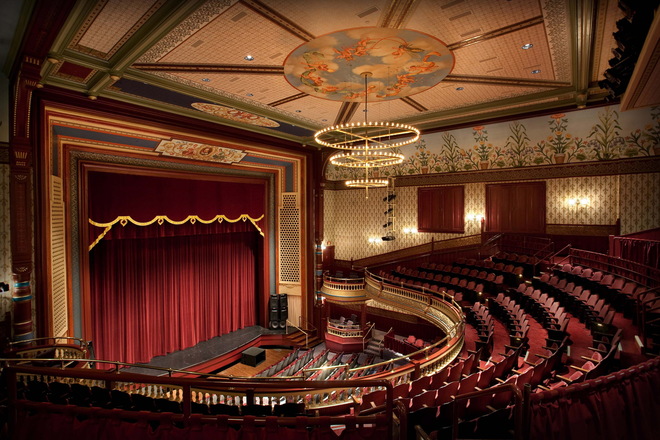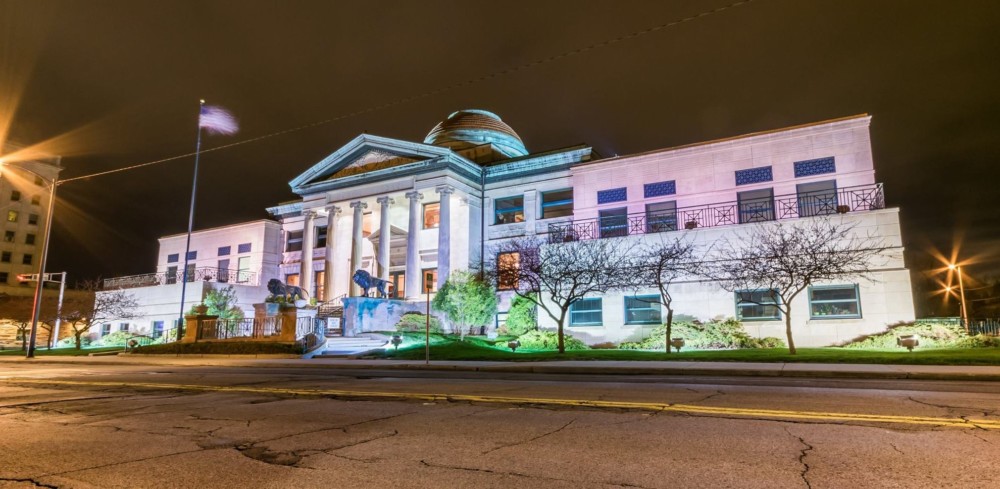A History in the Making: Historically Significant Hotspots in Oshkosh
As we move from the historic homes of Neenah in my last blog post to the hotspots found in Oshkosh, we can relate to desiring freedom beyond our four walls and spending the night out, whether to expand our impact in our community or to just escape quarantine.
While our homes may not change drastically–except for possible renovation attempts–the places we make public transform throughout the years, fitting the modern culture while still holding that historical charm.
Spots that bring a community together–whether a local park, museum, or now, a grocery store–display evidence of multiple lives and multiple footprints joining together to make a significant mark. In both shared hobbies and daily routines, these locations thrived and continue to thrive from the shared love of a community.
This transformative process is a reality throughout the Fox Cities, and especially in several of the cultural centers of Oshkosh including The Paine Art Center and Gardens, The Grand Oshkosh, and the Oshkosh Public Library.

As the perfect segue from homes to public hangouts, The Paine Art Center began as the home of Nathan and Jessie Paine and became a cultivator of community, talent, and education years after its construction in 1927.
Desiring to build a home to reflect their English heritage and Wisconsin pride, Mr. and Mrs. Paine hired architect Bryant Fleming to design a Tudor Revival-style country estate in 1925, largely influenced by English design.
Though built centuries after the Tudor style first manifested, Fleming combined architectural styles of arches, doorways, columns, window panes, and chimney stacks to make the home appear as a combination of three centuries of evolving English styles. This technique, combined with the use of local stone and wood, not only hid the home’s age, but also transformed it into a marker of one of Wisconsin’s proudest homes.
Unfortunately, after beginning construction in 1927, all came to a halt in 1932 during the Great Depression. Not finished until 1946, the home never fulfilled its title after the death of Nathan Paine in 1947.
Jessie Kimberly Paine, daughter of John Kimberly–one of four founders of Kimberly Clark & Co mentioned in my previous post–turned the home into a public museum, displaying the Paine’s lavish decor and furnishings.

Transforming from private to public, The Paine underwent renovations to the basement, art gallery, preserved parlors, grand rooms, staircase, and upstairs living quarters. Its elegant 19 gardens, courtyards, and carriage house also got an upgrade, now dazzling each visitor who passes.
From the life of two homeowners to the gathering place of the public, The Paine now stands as part of the livelihood of Oshkosh. It hosts weddings, exhibits, events such as Nutcracker in the Castle–a holiday must-see–and educational opportunities.
Its most prominent feature resides in the magnificent art displays: paintings, sculptures, antiques, dresses, and jewels all find their spotlight in The Paine. The most recent exhibit, “Alphonse Mucha: Master of Art Nouveau,” showcases the broad range of Alphonse Mucha’s work. In 2021, “Walk This Way” will feature the history of shoes as art.
Much like its upcoming exhibit “Walk This Way,” The Paine not only displays beautiful works of art, but also the countless footsteps of a community that has supported the Paine and influenced its success.
Its grand structure represents the foundations laid by dedicated individuals desiring community, and together they impacted artists, onlookers, and the entirety of the Fox Cities.

Sharing a similar impact and two-word name with the Paine, The Grand, or The Grand Opera House, also serves as one of Oshkosh’s most proud locations.
First opening its doors in 1883 with the production of “The Bohemian Girl,” The Grand always reflected its title with a lavish and modern Victorian design, Queen Anne style, and Roman influences. Its beauty was designed by the familiar William Waters, a popular architect of Neenah’s homes and all of the Fox Cities.
Unlike the preservation of the Paine, The Grand experienced numerous renovations and new owners, most drastically being changed in the 1950s into a motion picture house with a moved entrance and 8-foot removal of the stage.
After another 20 years of owners and renovations, The Grand had lost its grand appeal, finally provoking the community to take action and “Save the Grand,” which was the name of the renovation committee.
With yet an additional 20 years of advocating, the Grand was approved for renovation; four years and $3.5 million later, the building’s restoration was complete. On October 3, 1986, the Grand Opera House welcomed back the community with a performance of “The Bohemian Girl,” a homage to its first show nearly a century before.
Unfortunately, The Grand faced neglect once again, and in 2009, it closed, rallying the city to “Stand with the Grand” once again. Hundreds of people raised money, protested in the streets, and gave heartfelt testimonies in defense of The Grand, and finally, it opened once more, where it stands proudly today.

From the dedication of an impassioned community, The Grand, in all of its glory, showcases operas, musicals, plays, and events of all kinds. Many have graced its stage, including a few highly notable individuals: Vincent Price, Samuel Clemens (as Mark Twain), Harry Houdini, and President William Howard Taft, to name a few. In recent years, the Smothers Brothers, Debbie Reynolds, and Jeff Daniels have made appearances, bringing stunning performances and hysterical laughter.
Whether from proud moments watching a school performance or wonderment at the talents of local artists, The Grand stands as a spotlight for not only gifted performers but a spirited community brought together by art.
Through protesting to save its glory or pushing to get a spot on its stage, the Grand holds the memories of centuries of individuals joining together to take charge and preserve the places that make their city their home.

With the same legacy as both The Paine and The Grand, the Oshkosh Public Library often gets overlooked as a cultivator of community involvement and impact. With its functionality and convenience, many may fail to recognize the lives that impacted its foundation and have been equally impacted by what it has to offer.
Officially built in 1900 with funding from both the city council and Mr. and Mrs. Marshall Harris, the library was designed by none other than William Waters to feature a neo-classical style and a capacity of over 100,000 volumes.
The library first featured a central interior room that was surmounted by a dome 46 feet above the floor and a second floor used as a museum, lecture hall and meeting space. However, due to its growing popularity, the library underwent numerous changes.
Several renovations changed the appearance of the library drastically: an L-shaped renovation in 1967, an expansion in 1994, an additional basement, a redone second floor, and the closure of the original building.
Though the library has constantly changed in appearance, it was only adapting to the demands of the people. Generations of individuals fueled the library’s success and aided its renovations. The voices of children, adults, and the elderly preserved the building’s beauty, while their impact became memories echoing in the walls.

To symbolize the preservation of history and the continual growth in society, the library lions stand radiant and proud. These lions, named Sawyer and Harris after the library’s founders, were sculpted in 1912 by Italian sculptor Gaetano Trentanove.
Crafted out of bronze, the lions exist as prominent markers of Oshkosh’s past and triumphal future. Even though the library has changed dramatically, the lions still stand strongly and firmly, refusing to deny the lives that built up this city.
Whether in museums, opera houses, or libraries, the lifestyles of a community are not just ordinary, common routines, they are crafters of history and legacy. Together, individuals take their passions and invoke change to their society, all while preserving the voices of those before them.
Never underestimate the power of a protest, community event, or popular spot. Men and women years before us created places that now reflect our beliefs, joys, and identities.
Laughter, emotion, and inspiring learning spreads from homes to public spaces, enters the hearts of a community, and eventually, travels beyond the limits of any city or state.
As we come to appreciate the places that once were and will again be a part of our daily routine, let us ponder how our actions, too, will influence generations to come. Let’s leave them something worth preserving.
This thought is echoed in the concluding words of Anne Hintz’s poem in dedication to the Library Lions:
“Such silent strength carries far
And wide.
Unheard by generations, their bronze stillness
Has made their presence known
All this century long as they march
Motionless toward the next.
The lions are ready.
Strong, firm in their direction,
Not a muscle will flinch.
They appear
About to stride into time.”
Anne Hintz










Leave a Reply Steve Klegon Cancel reply